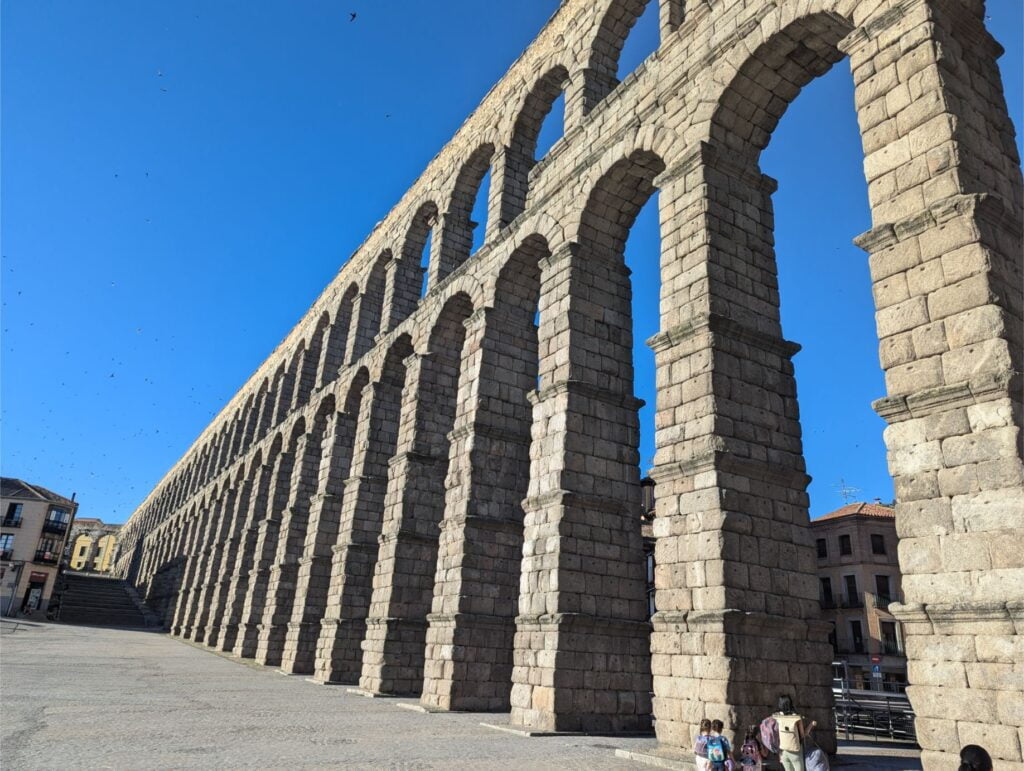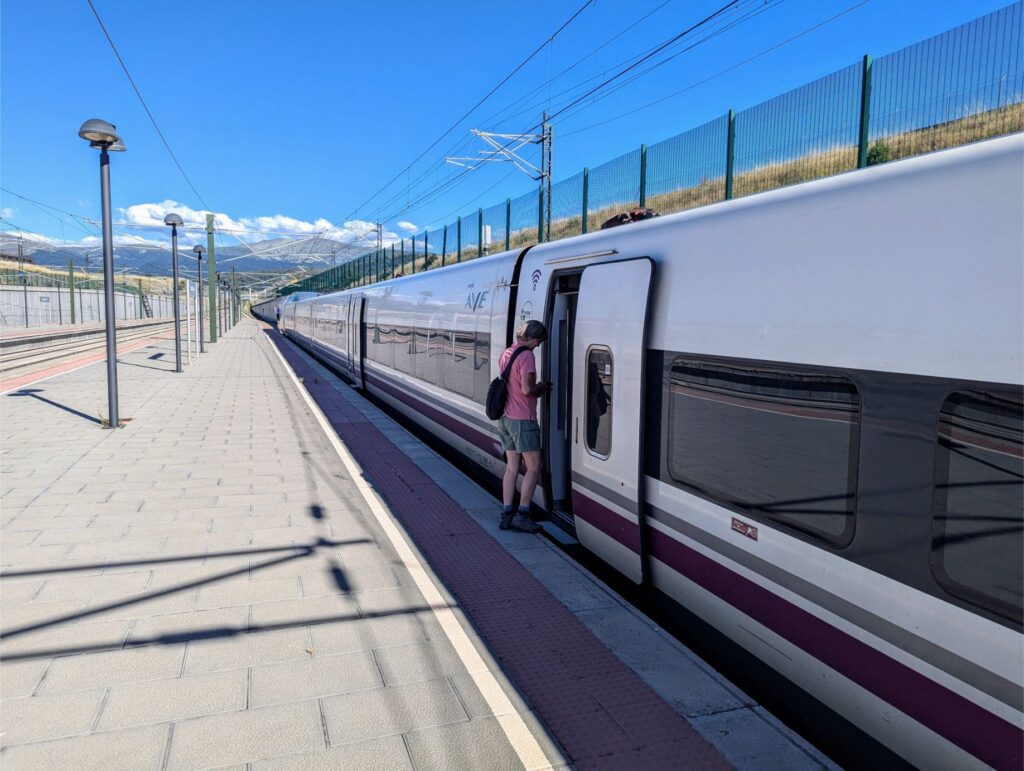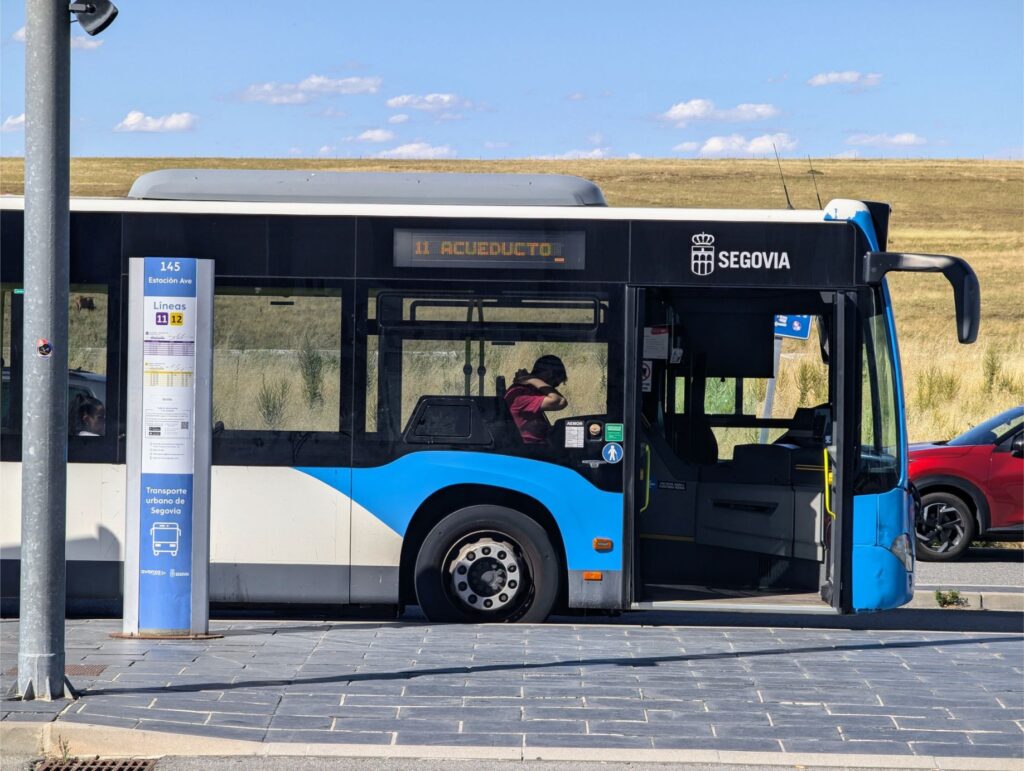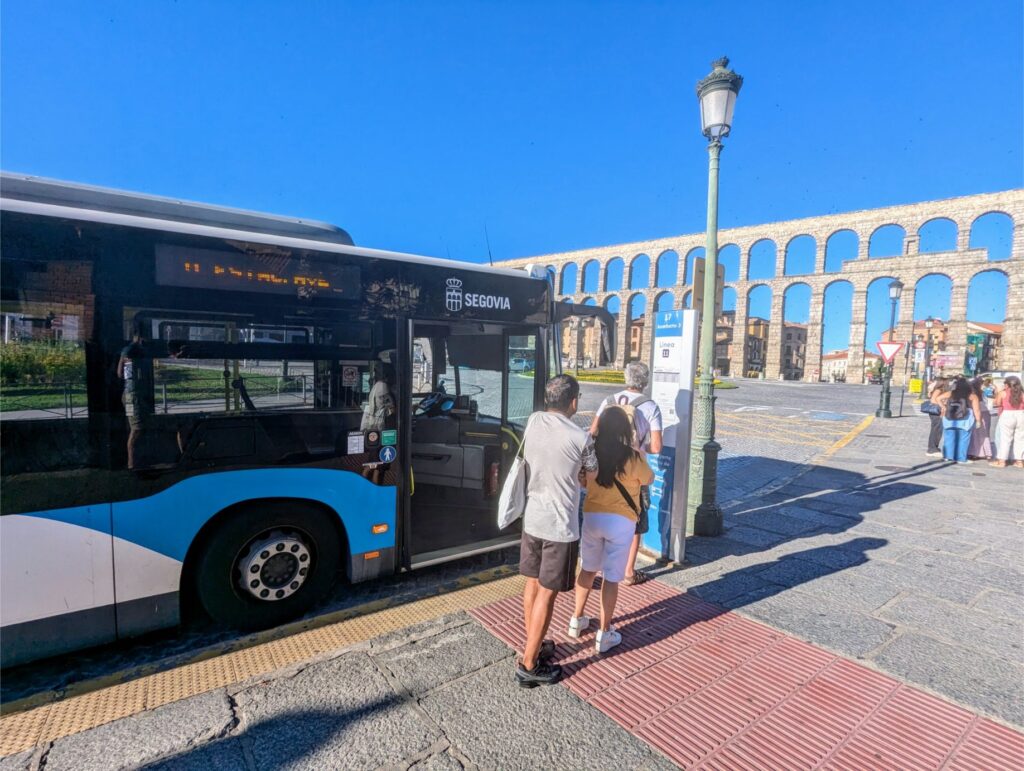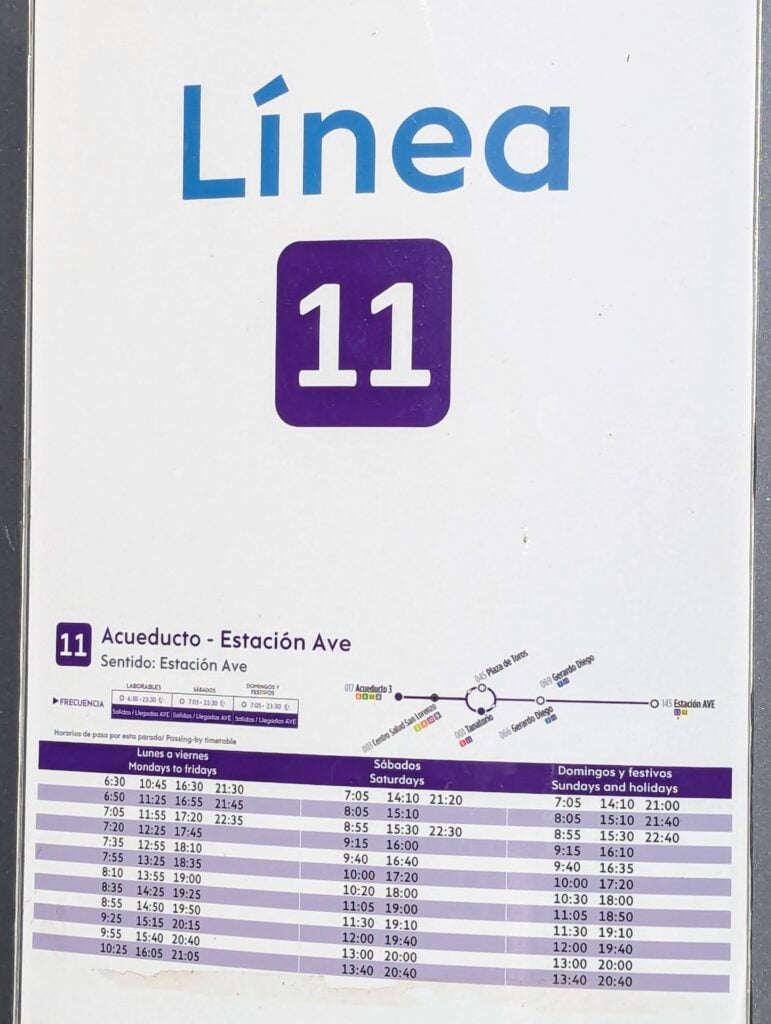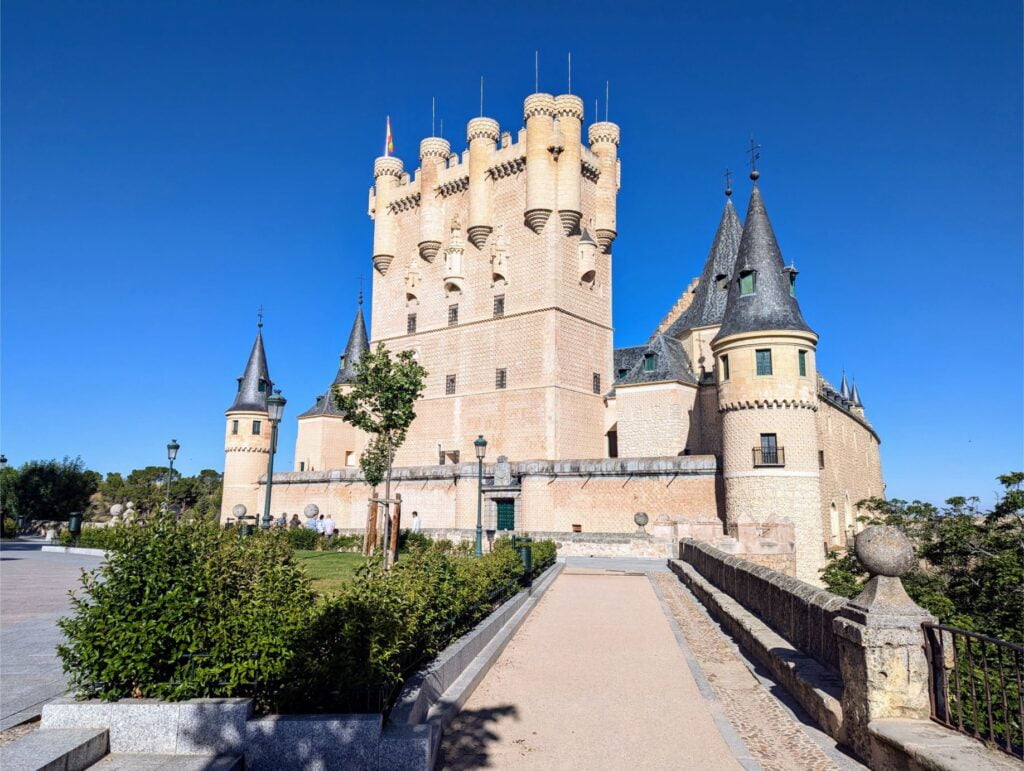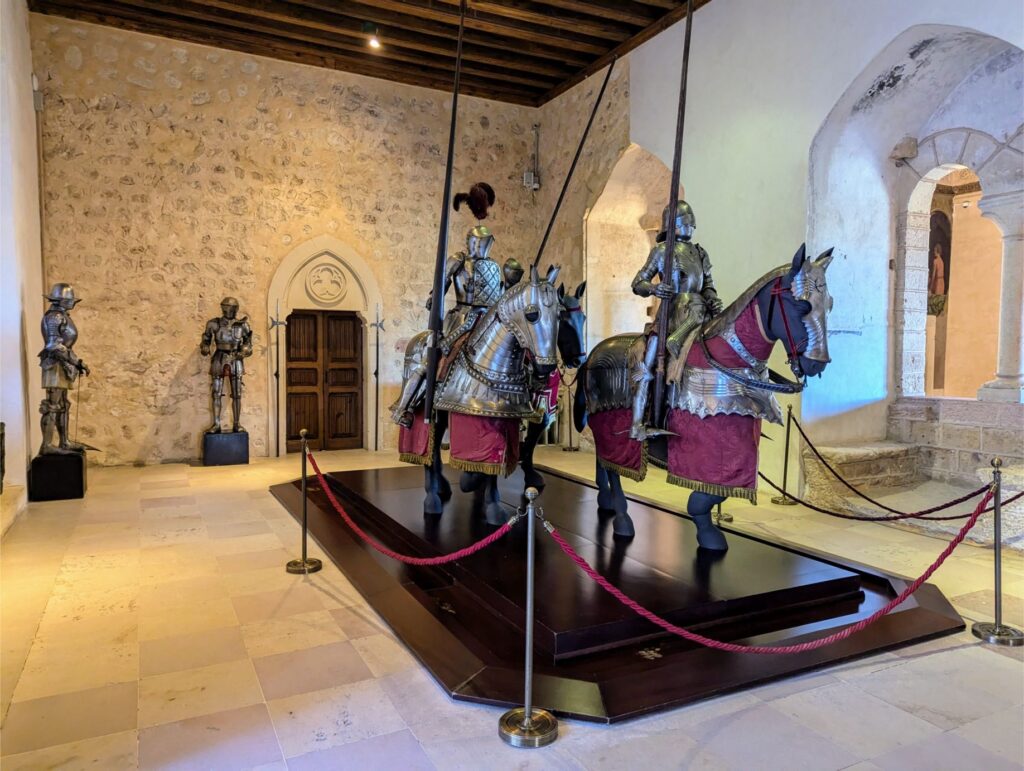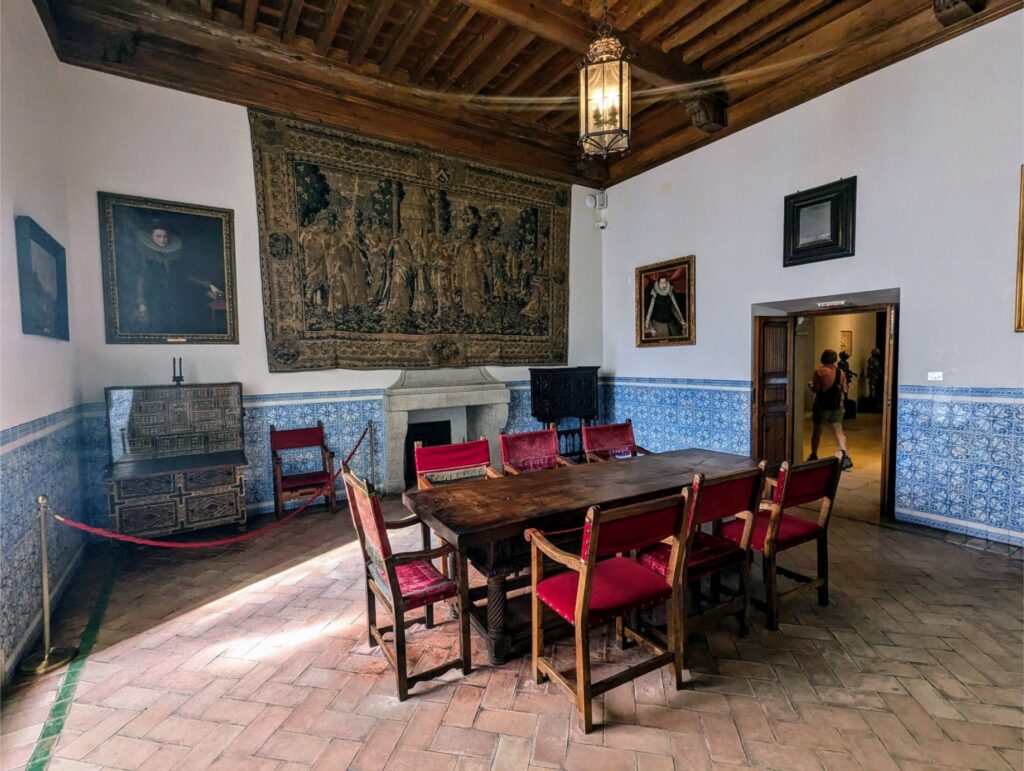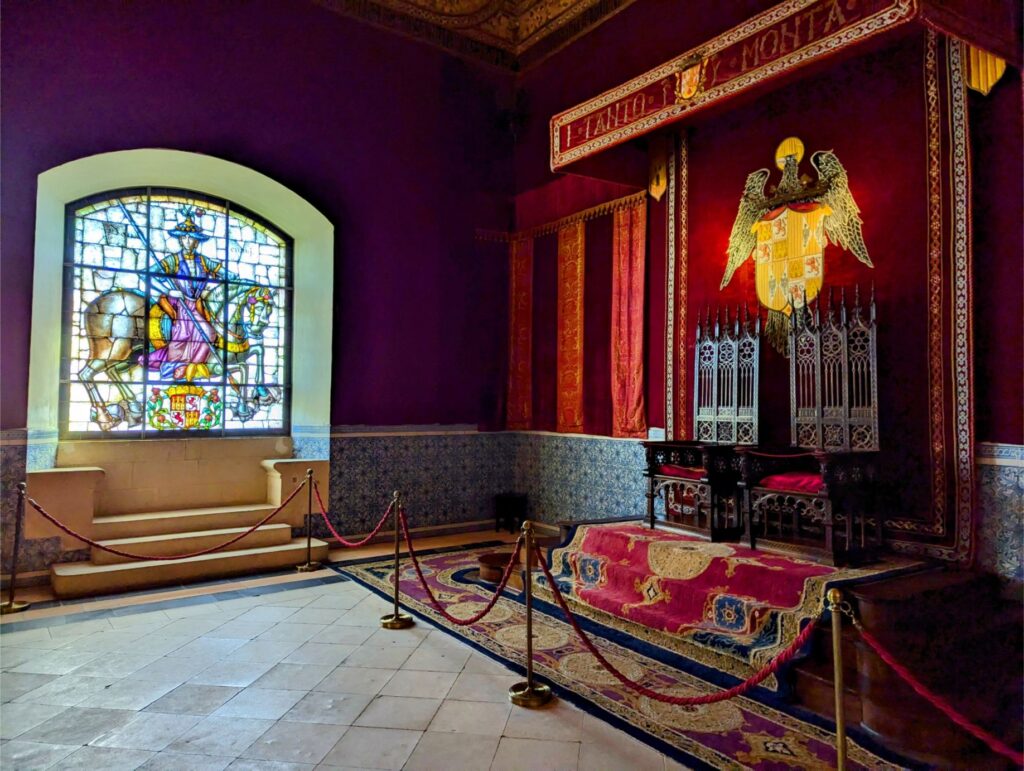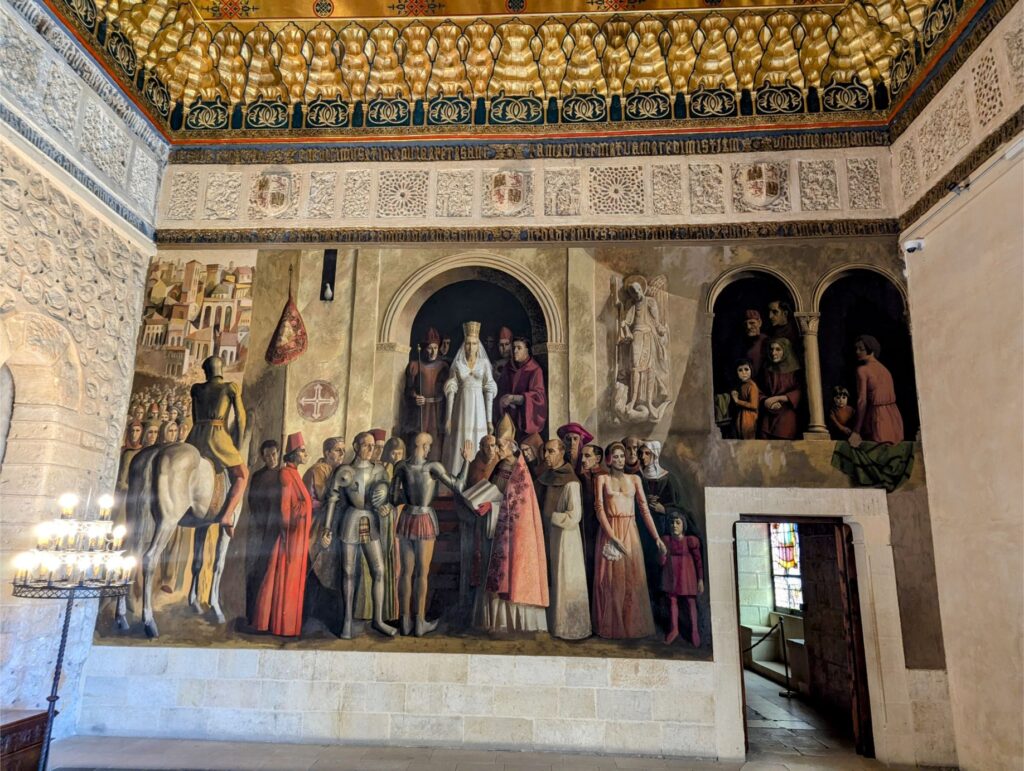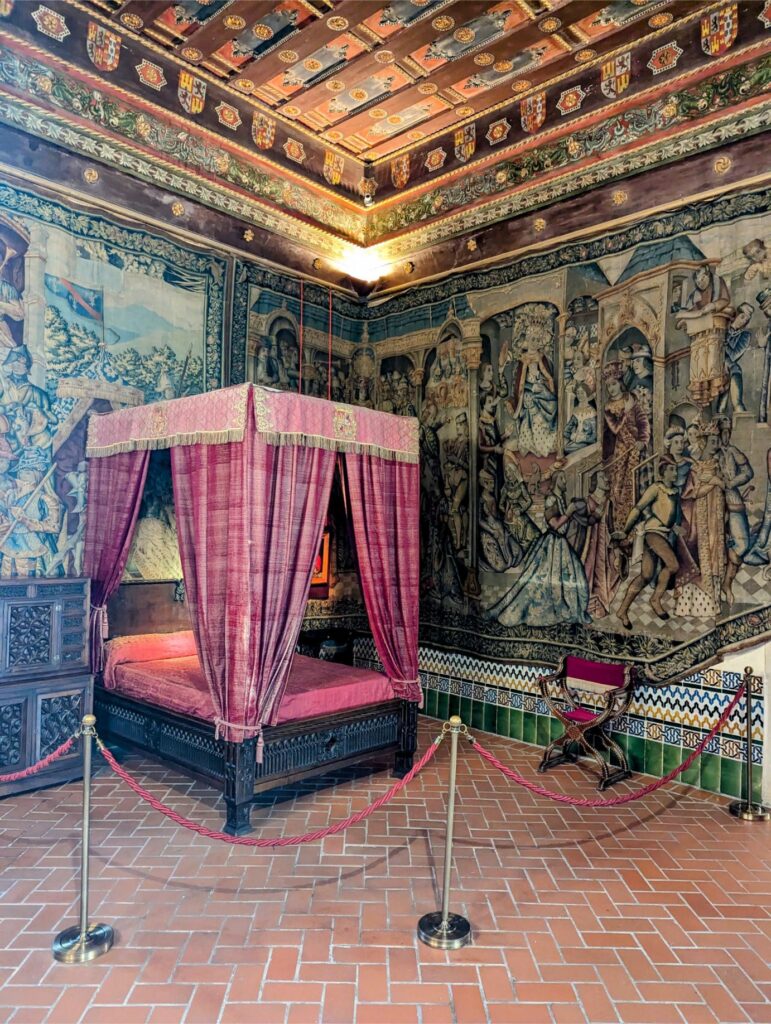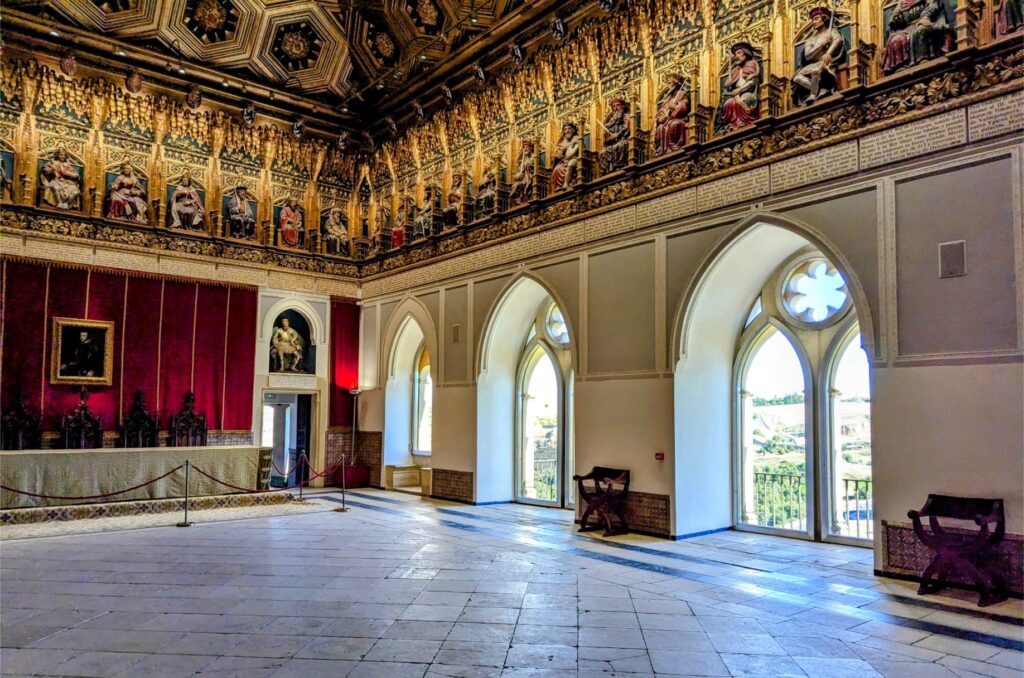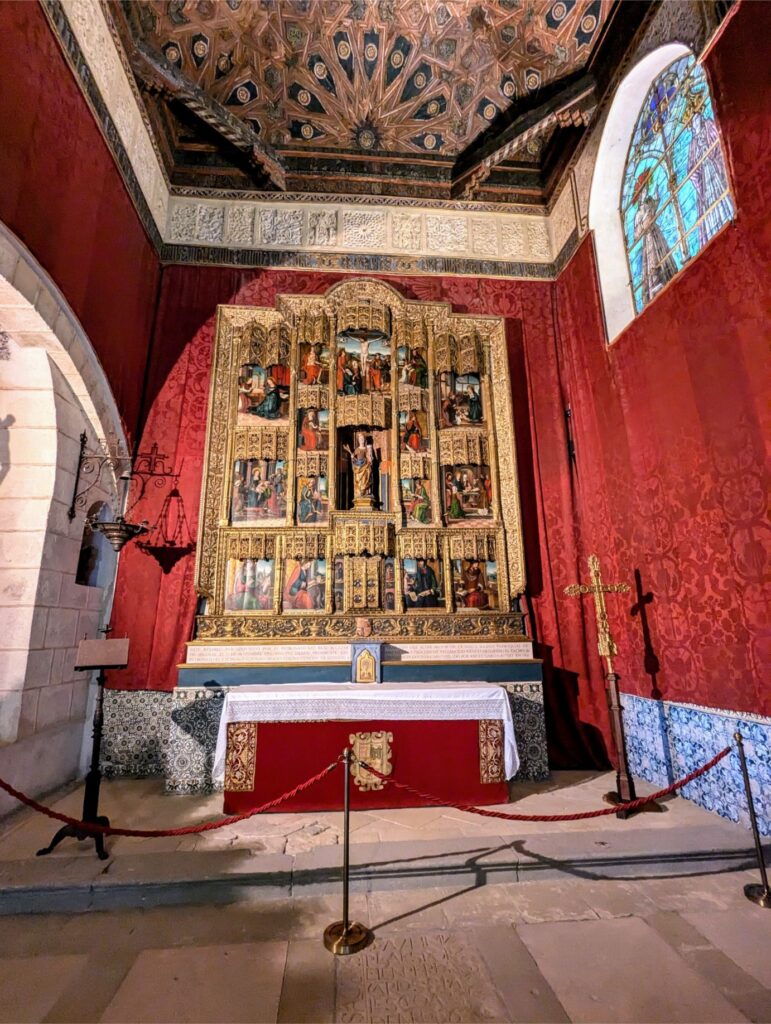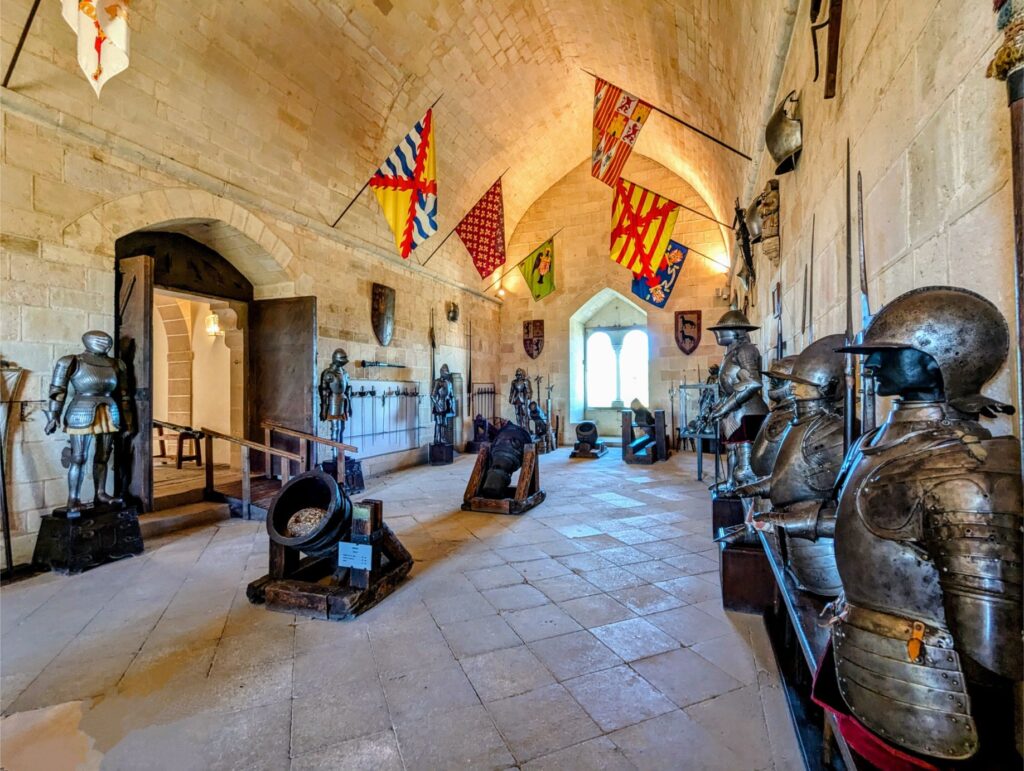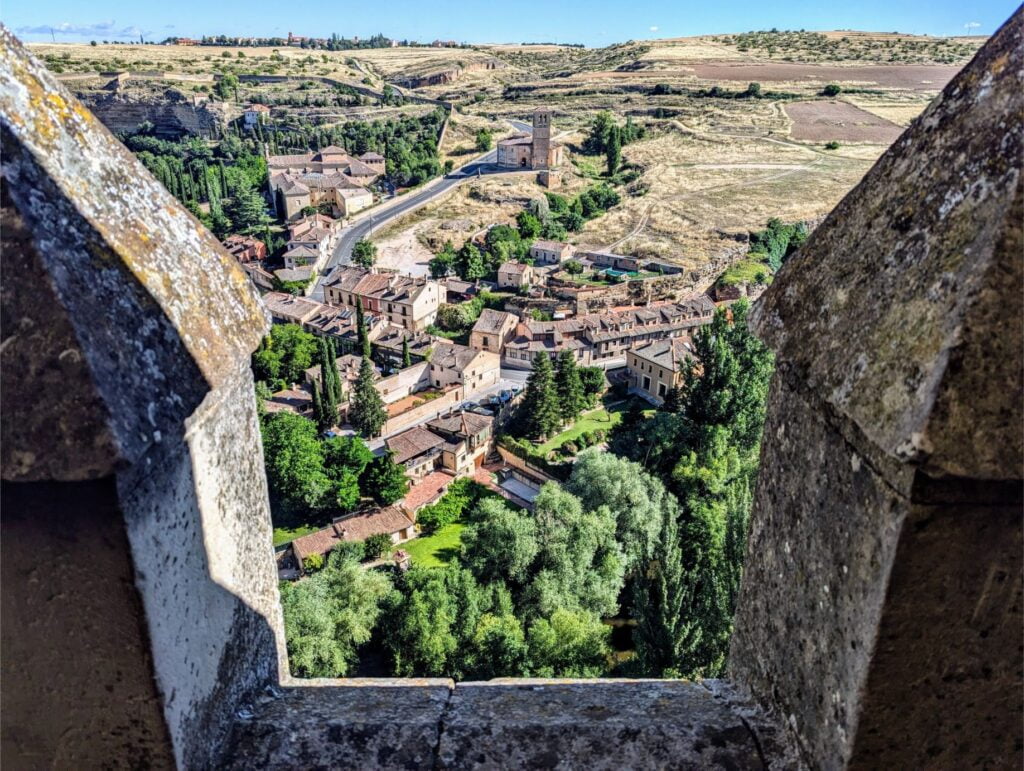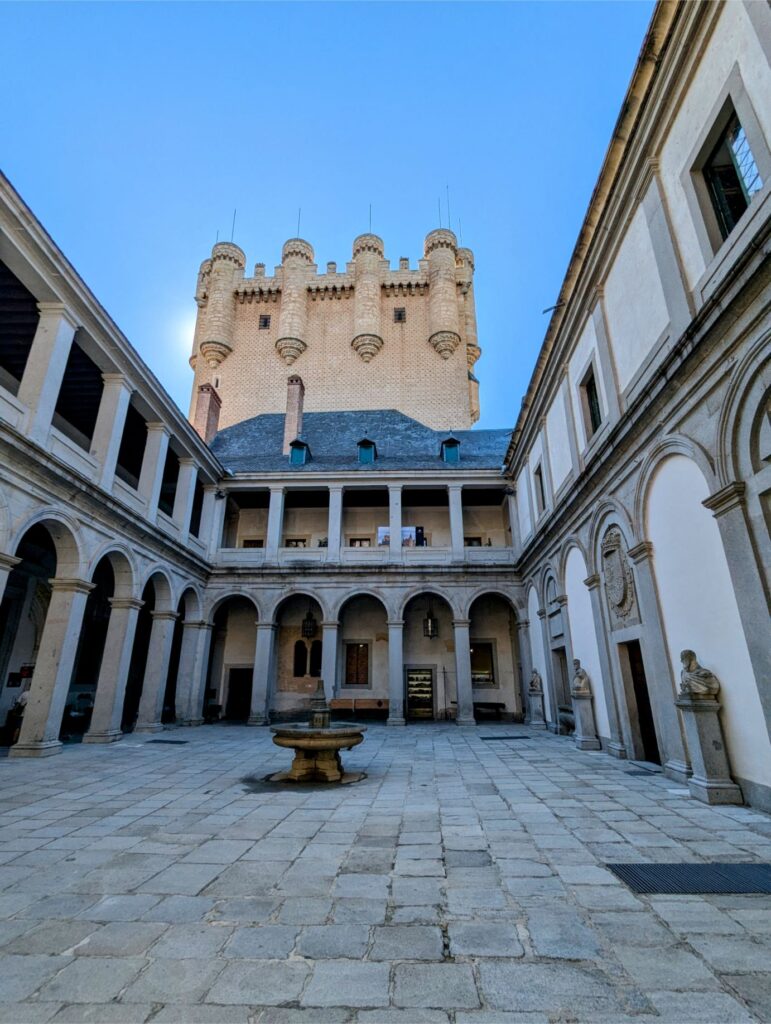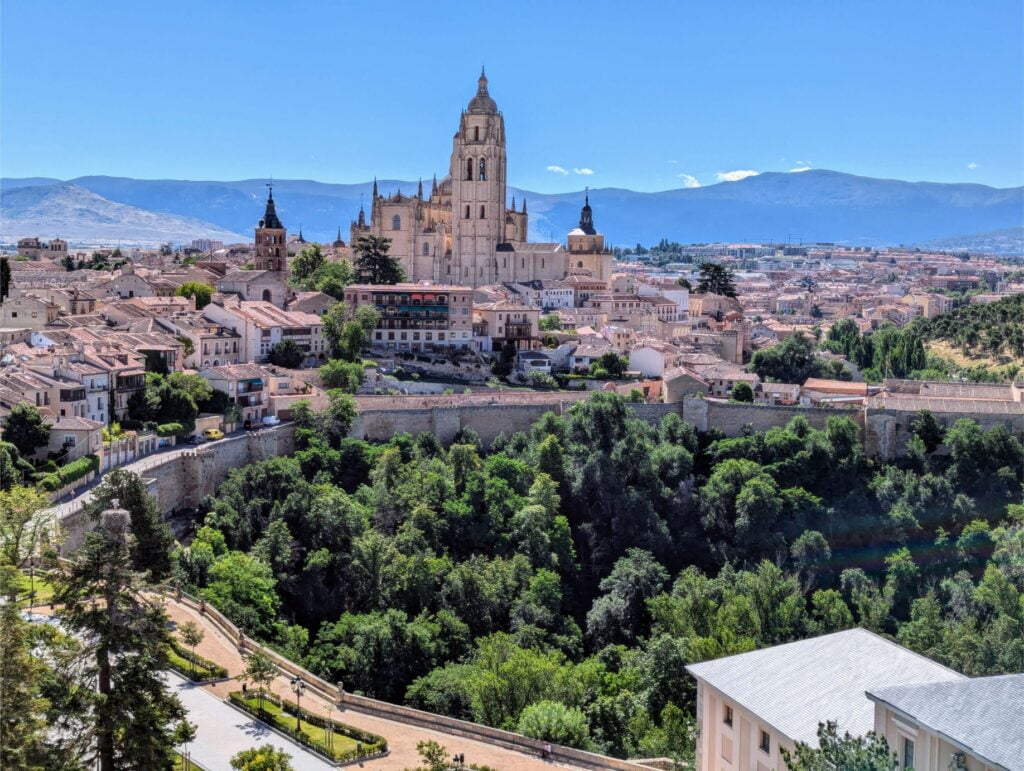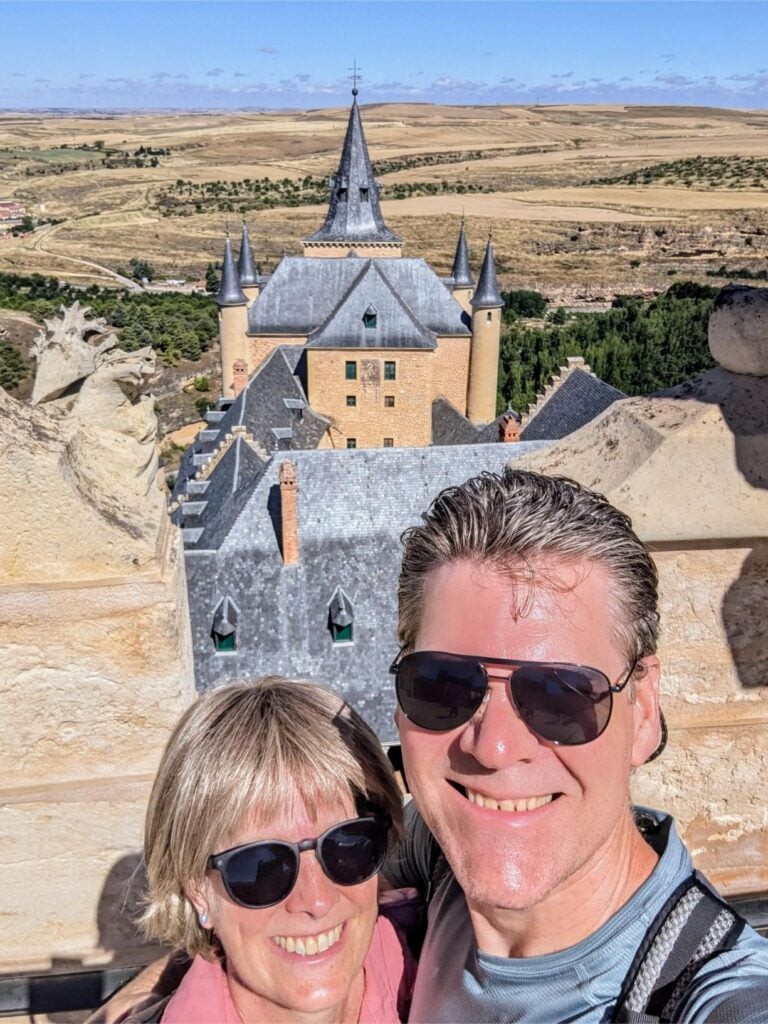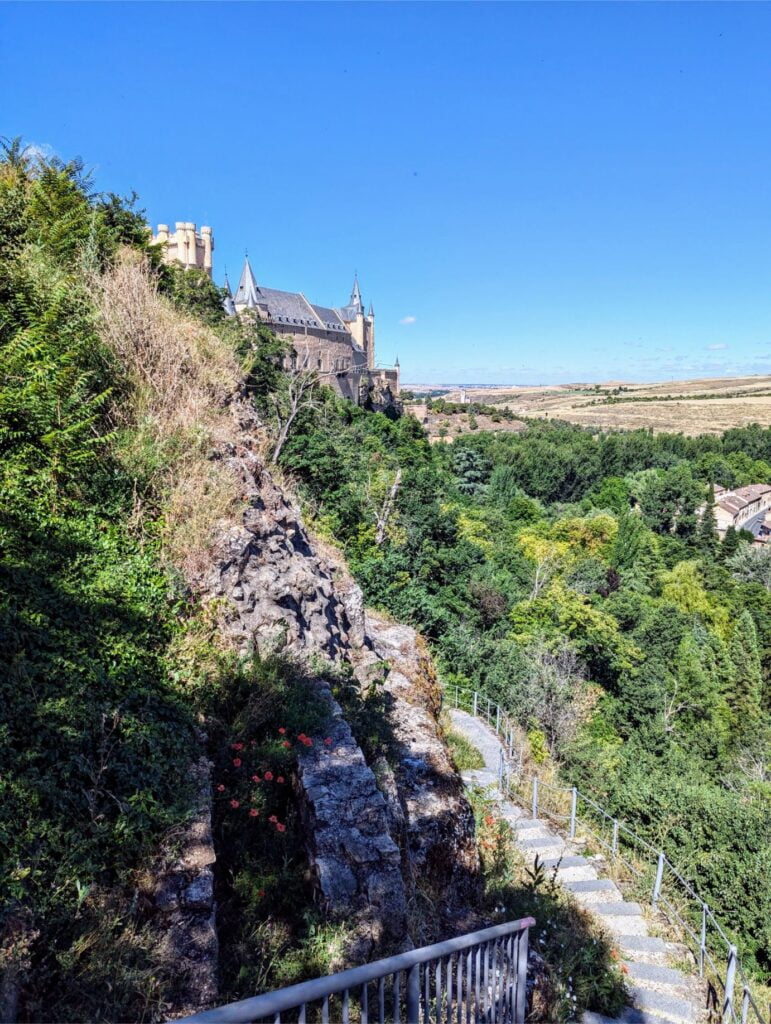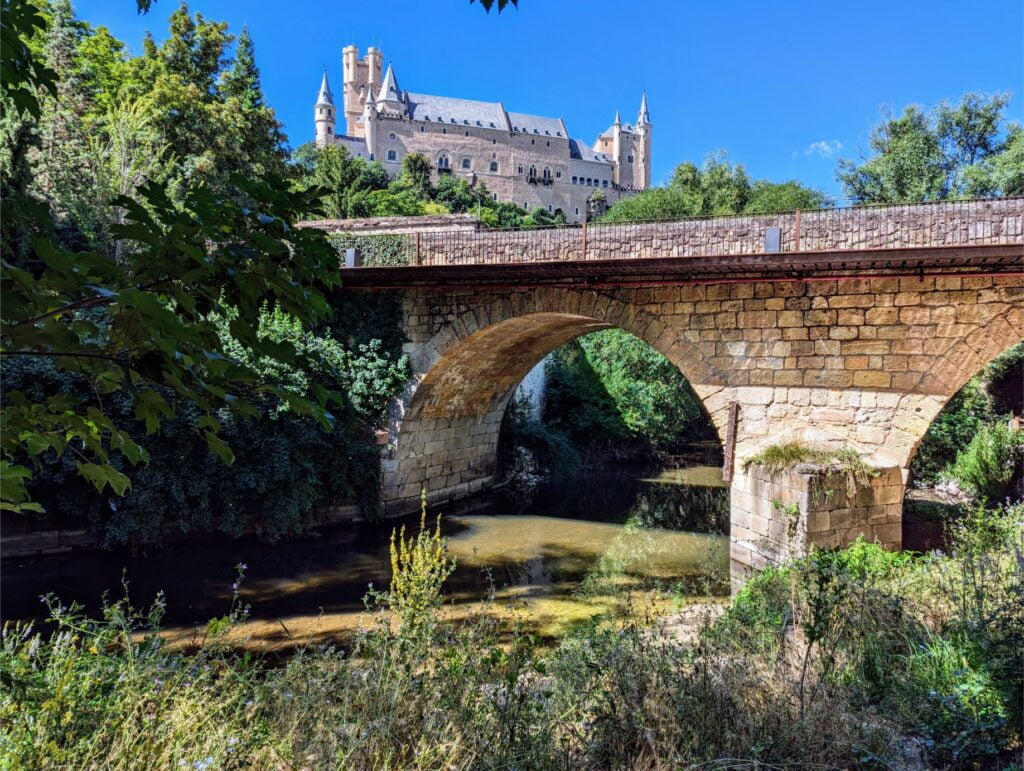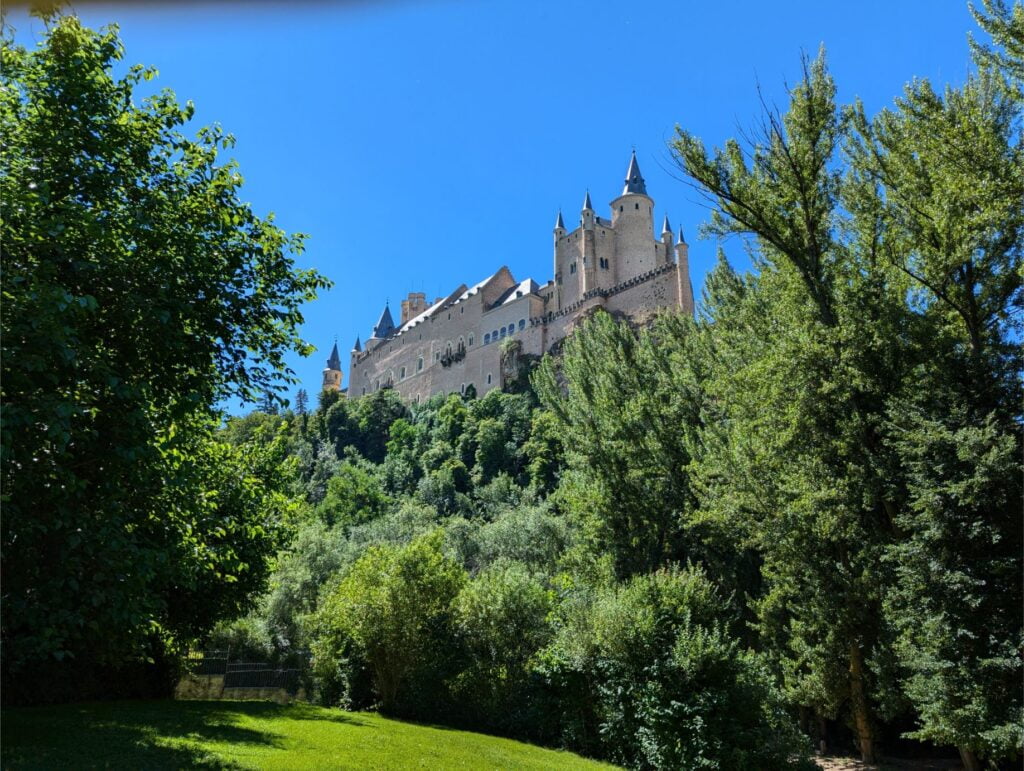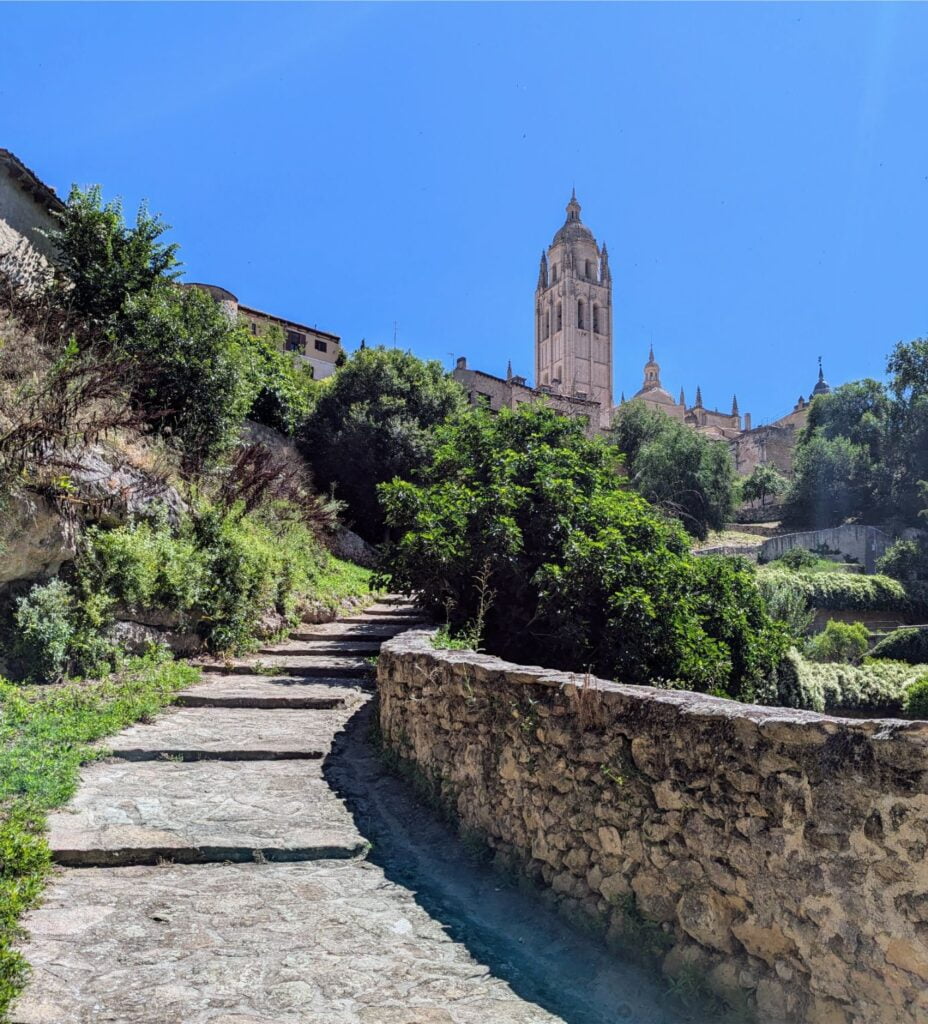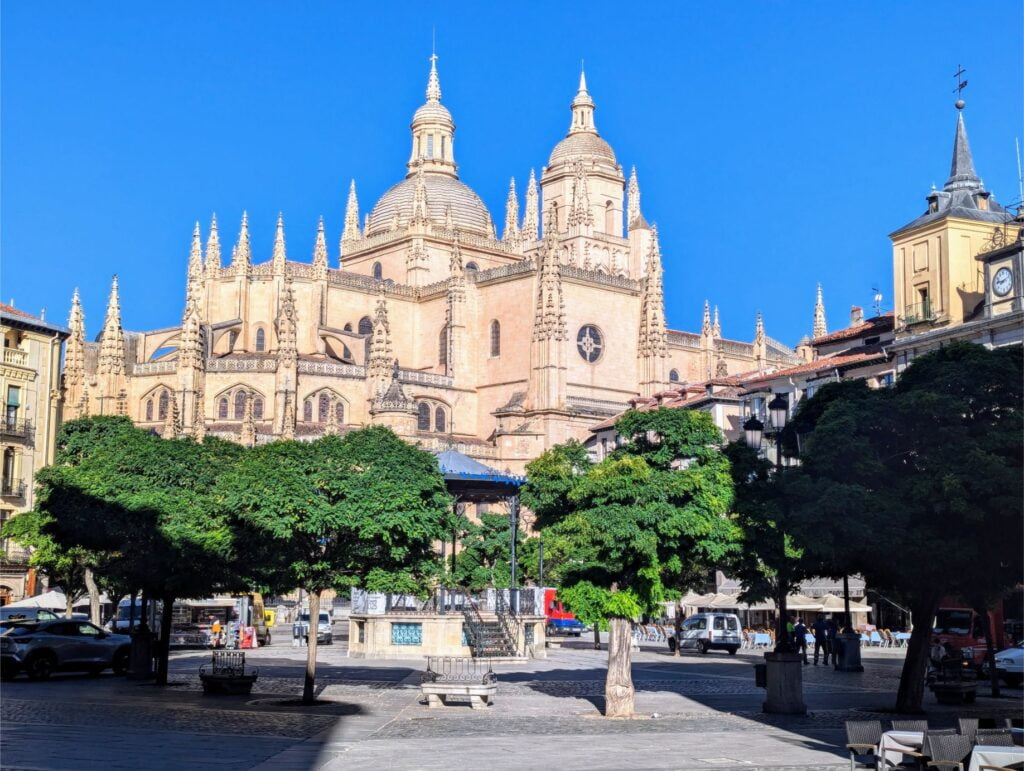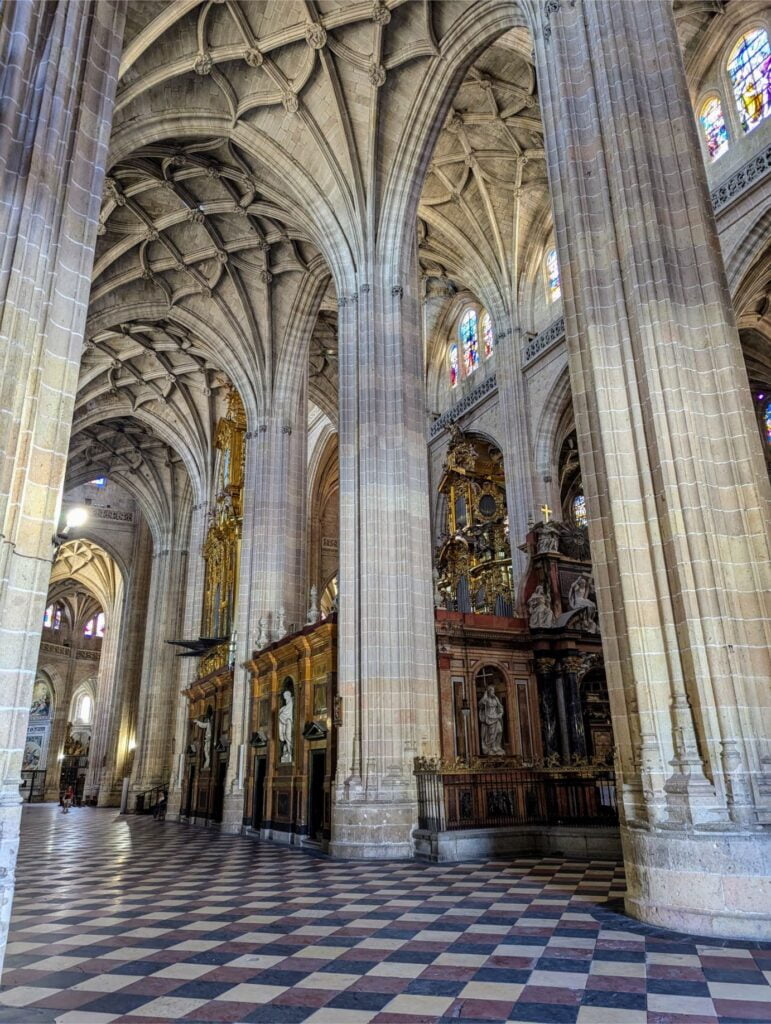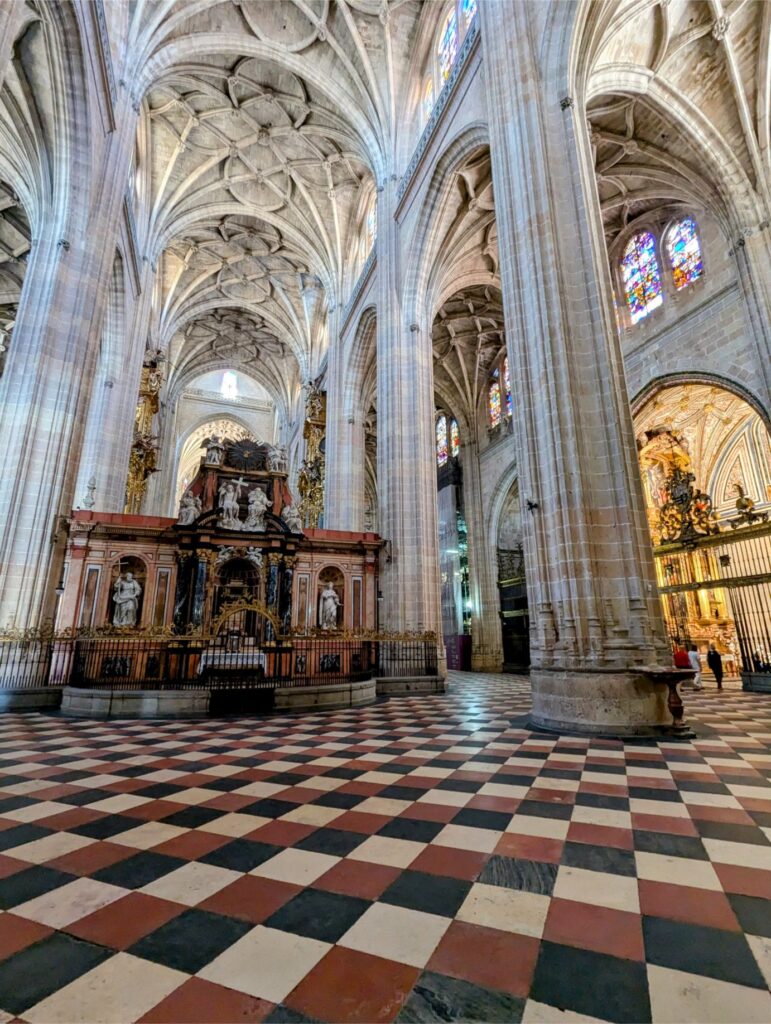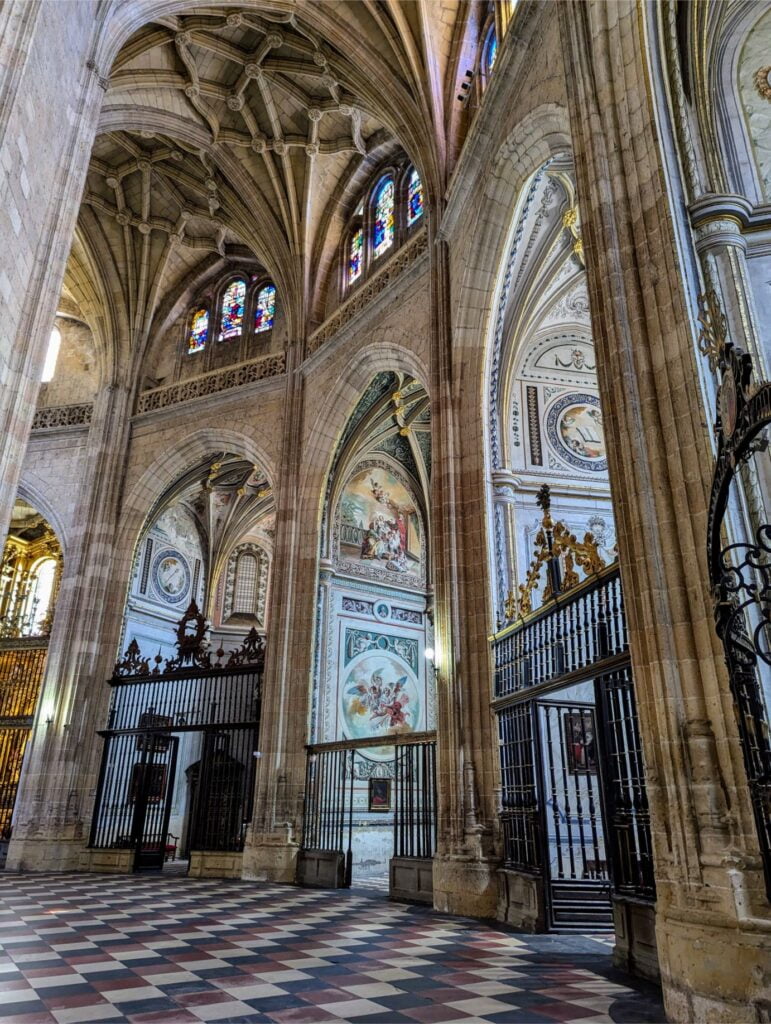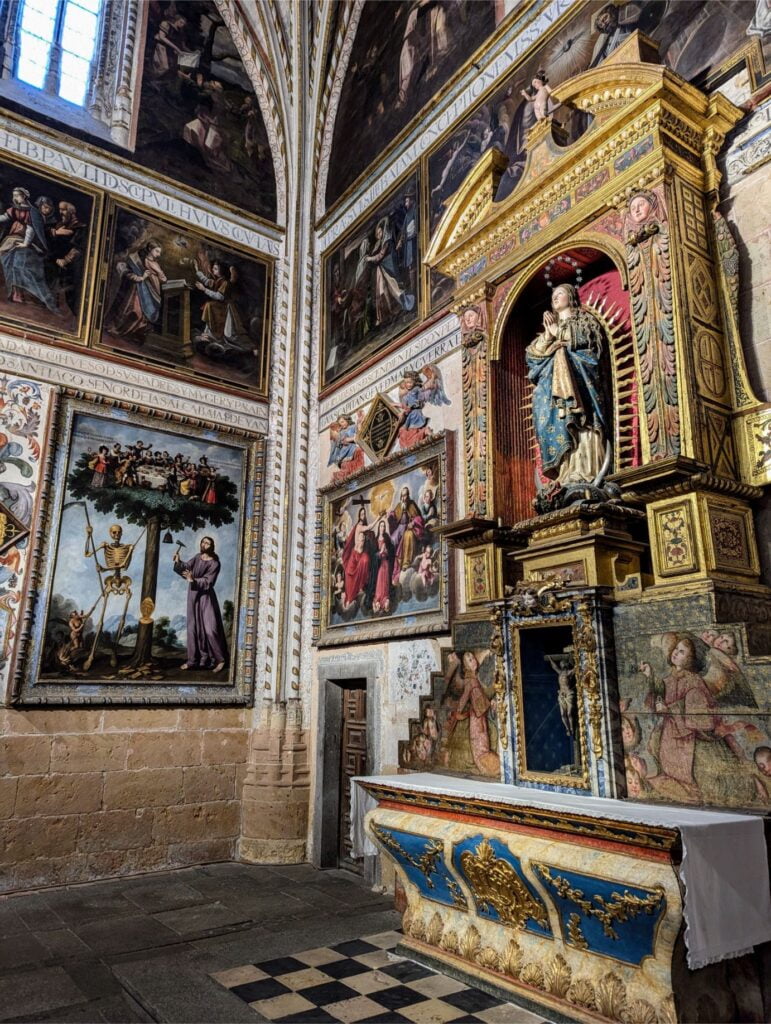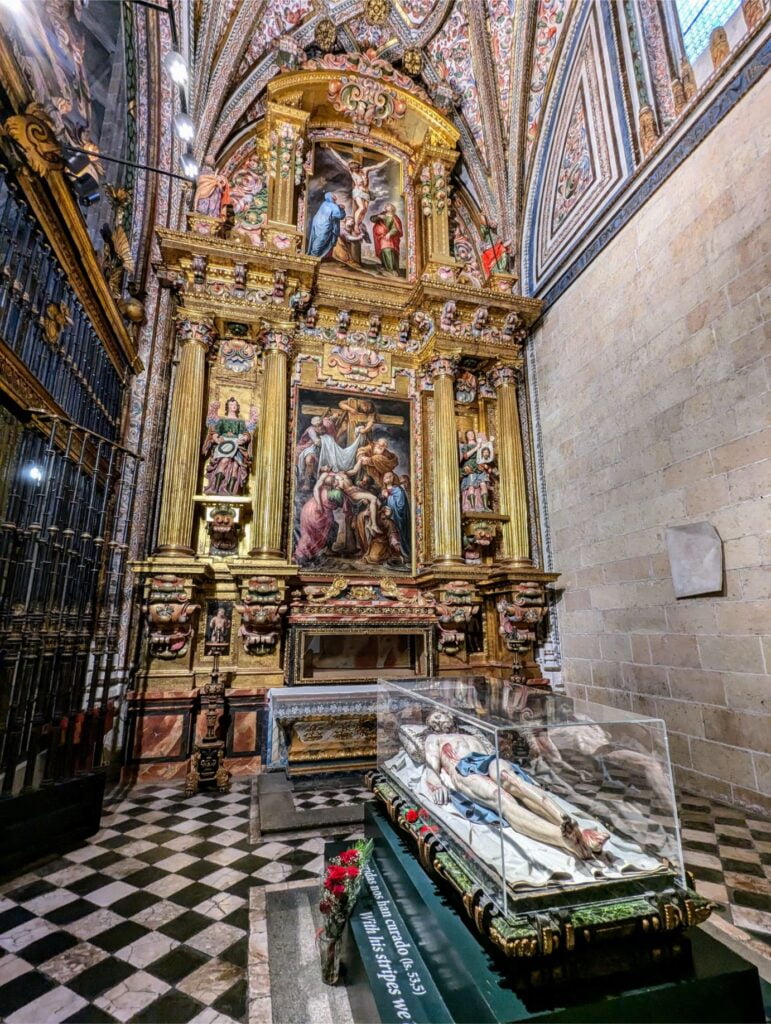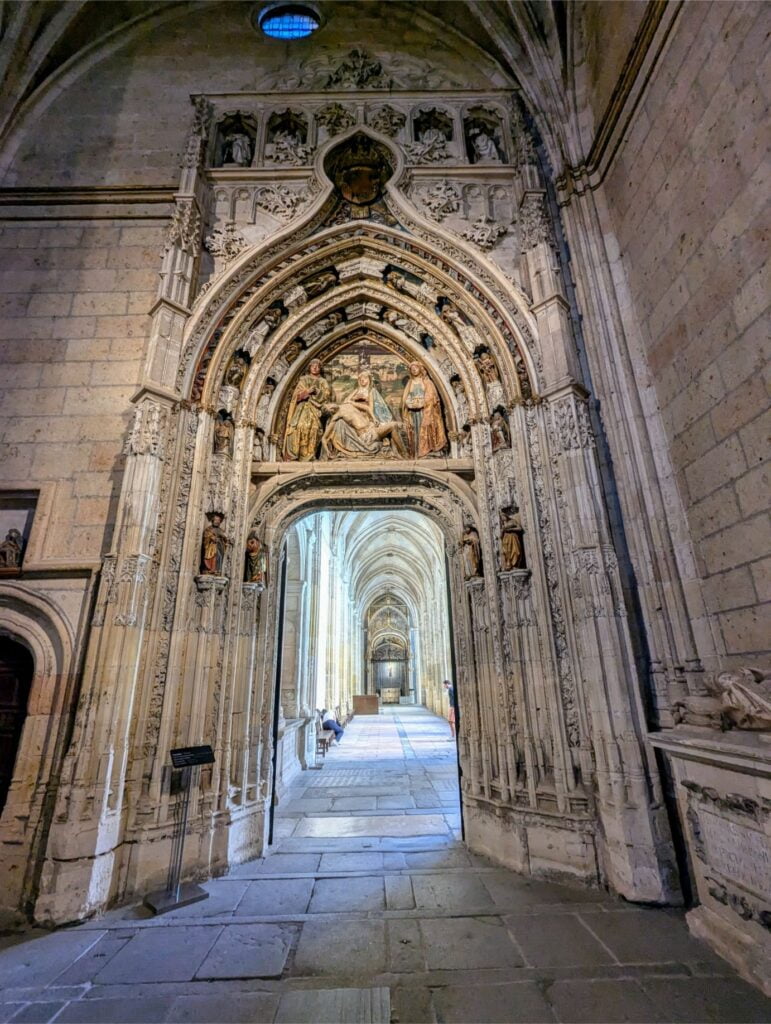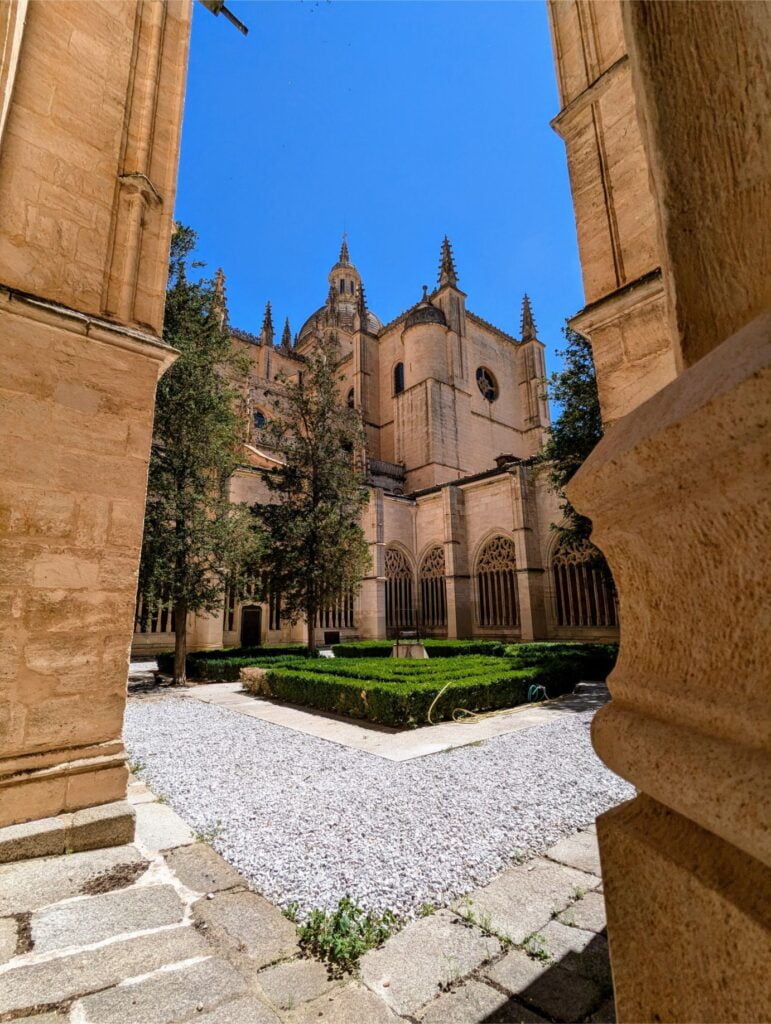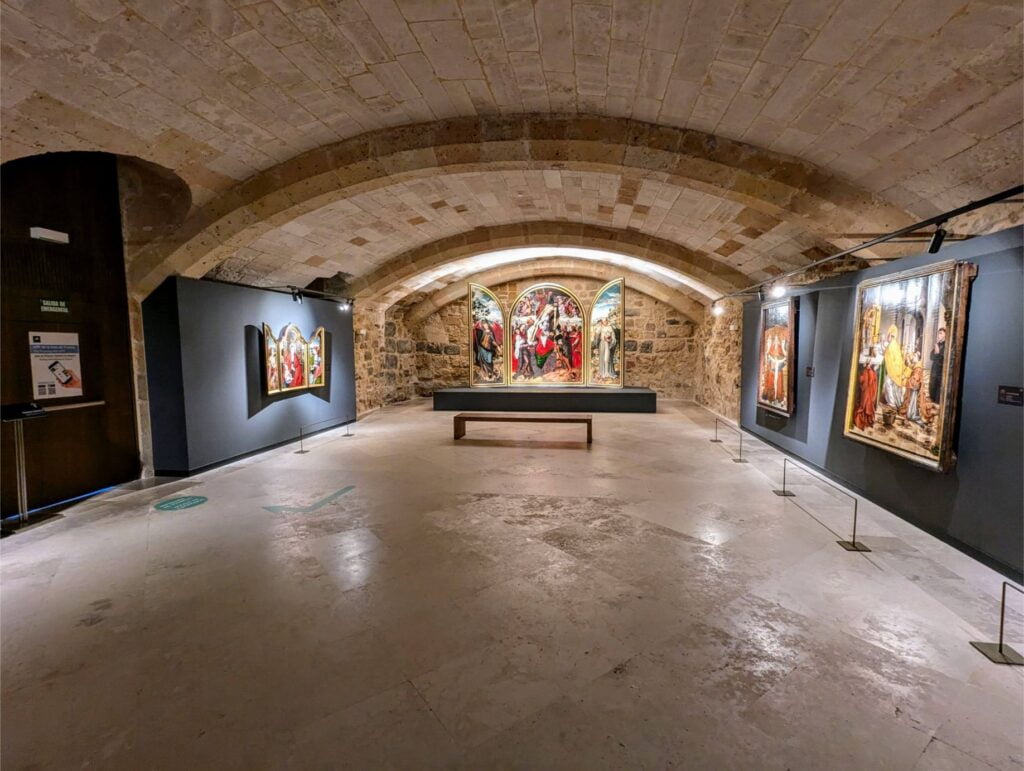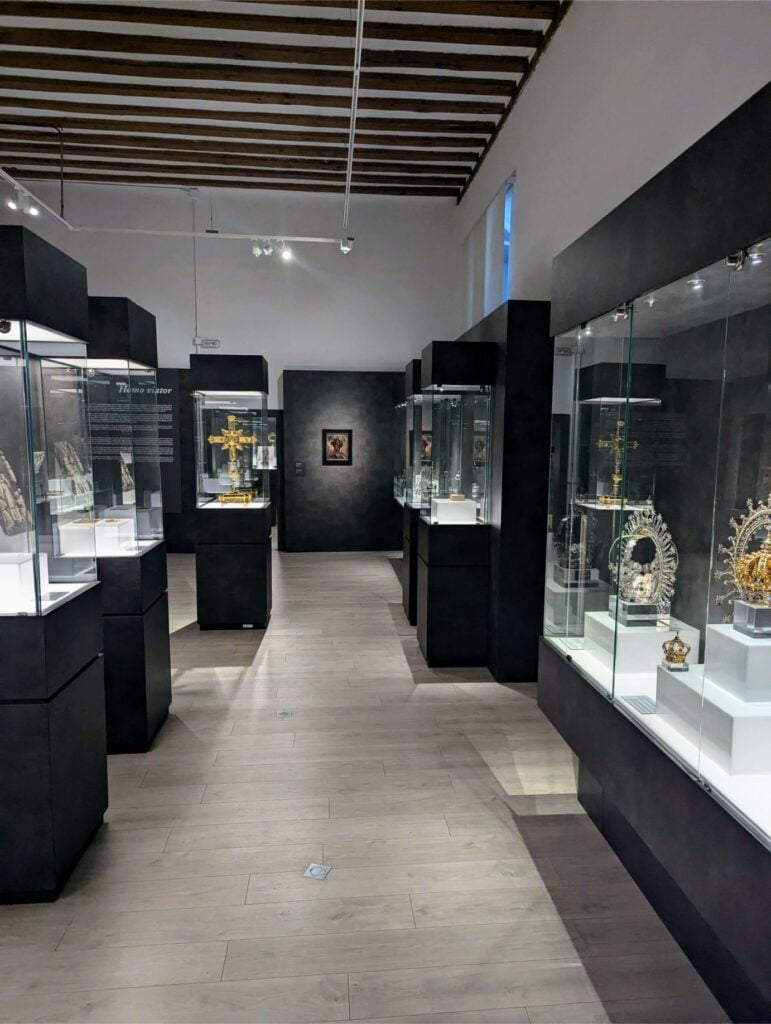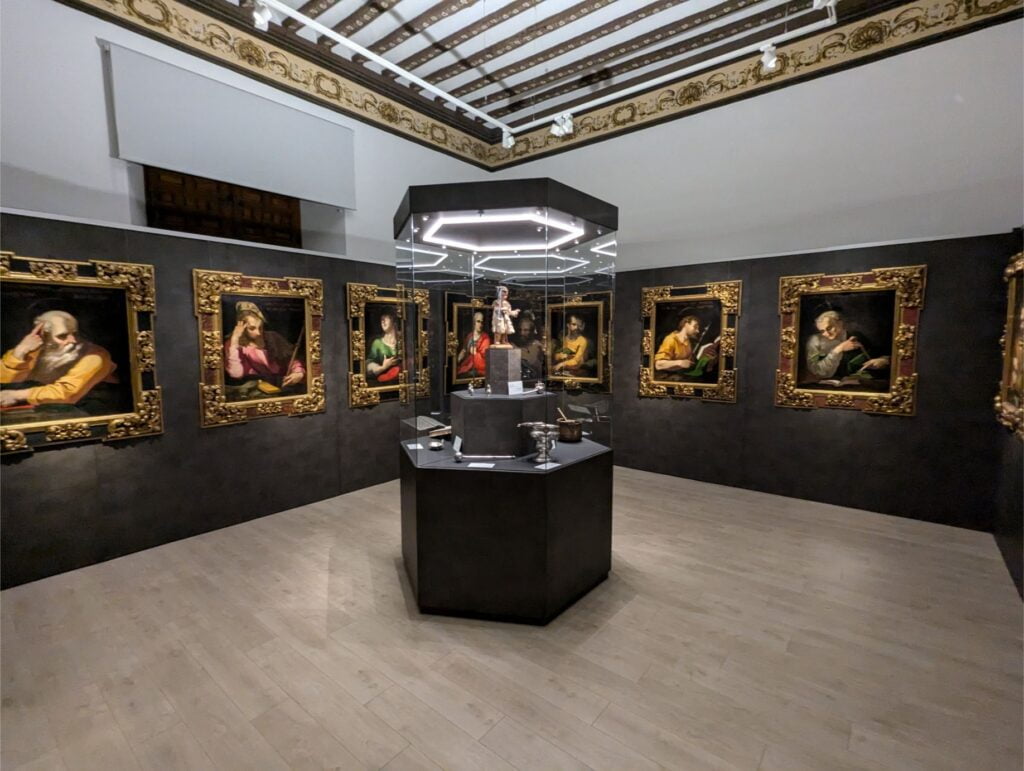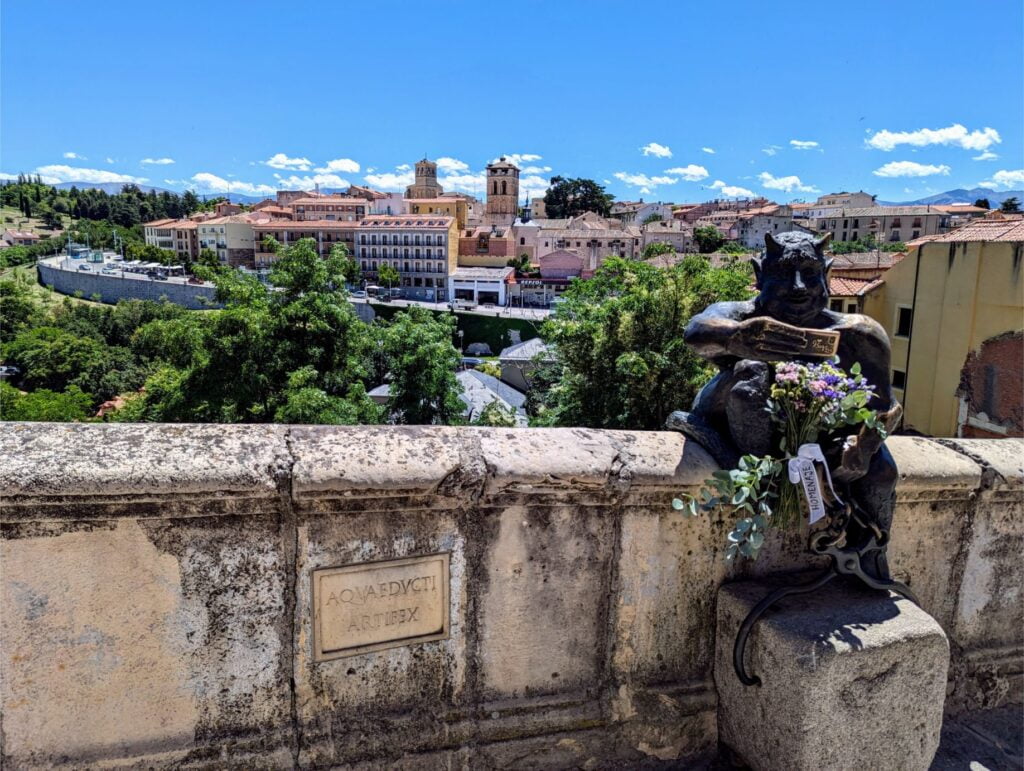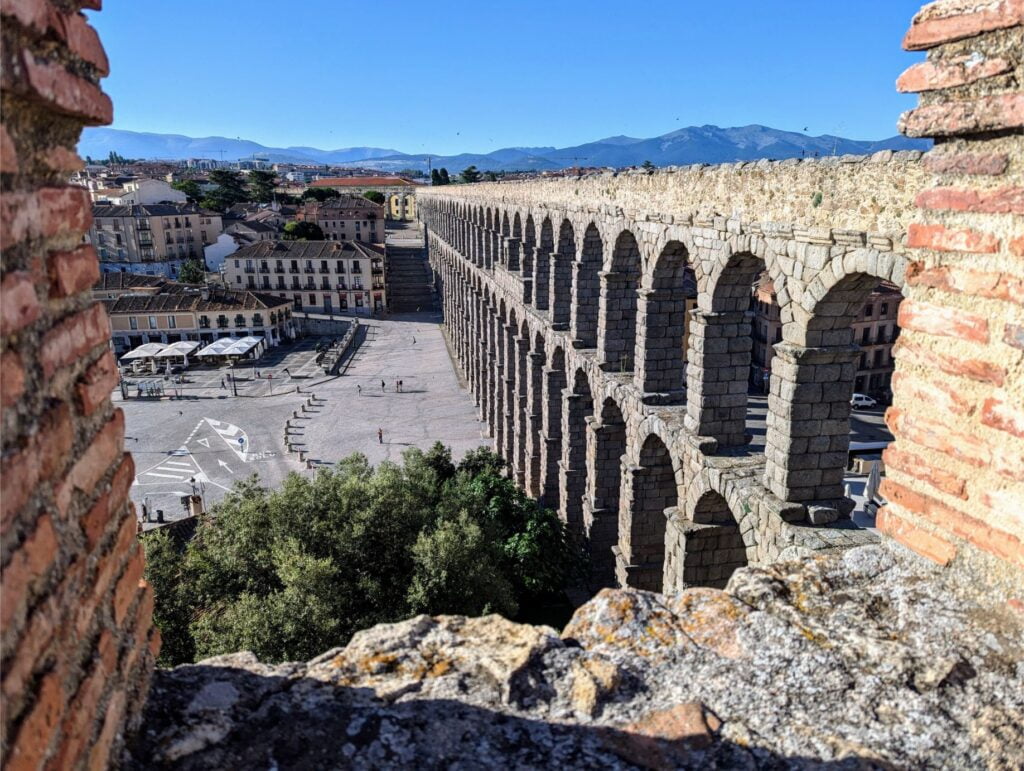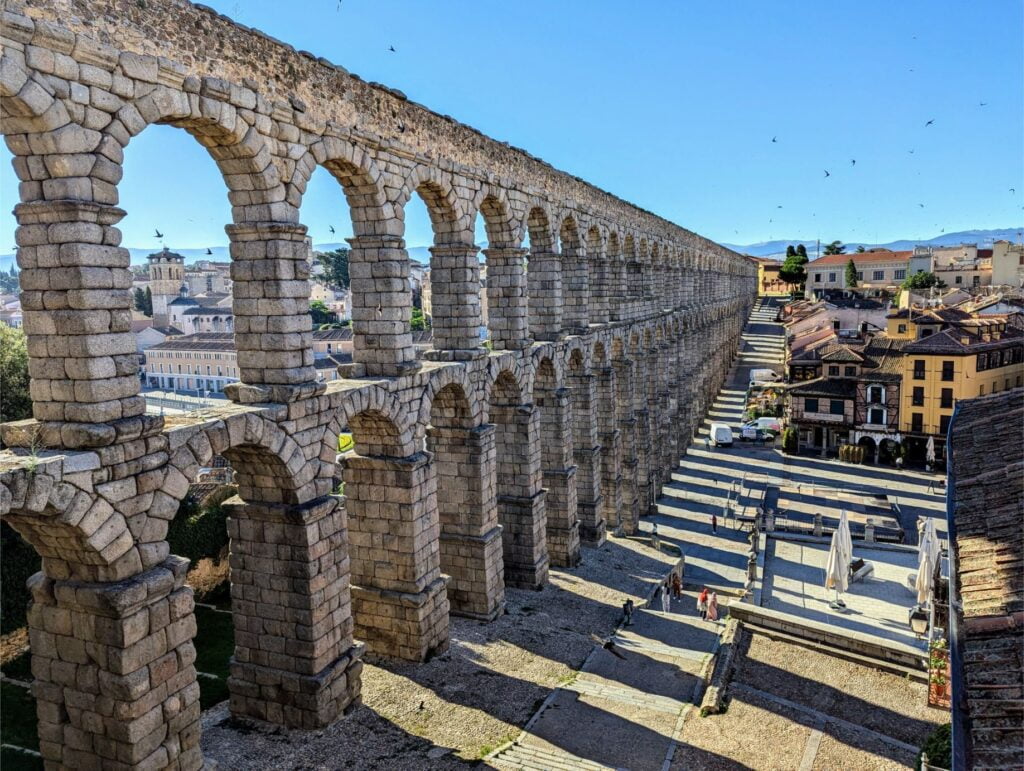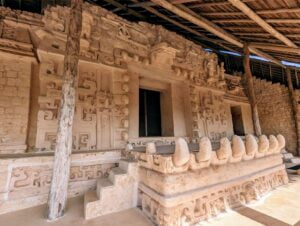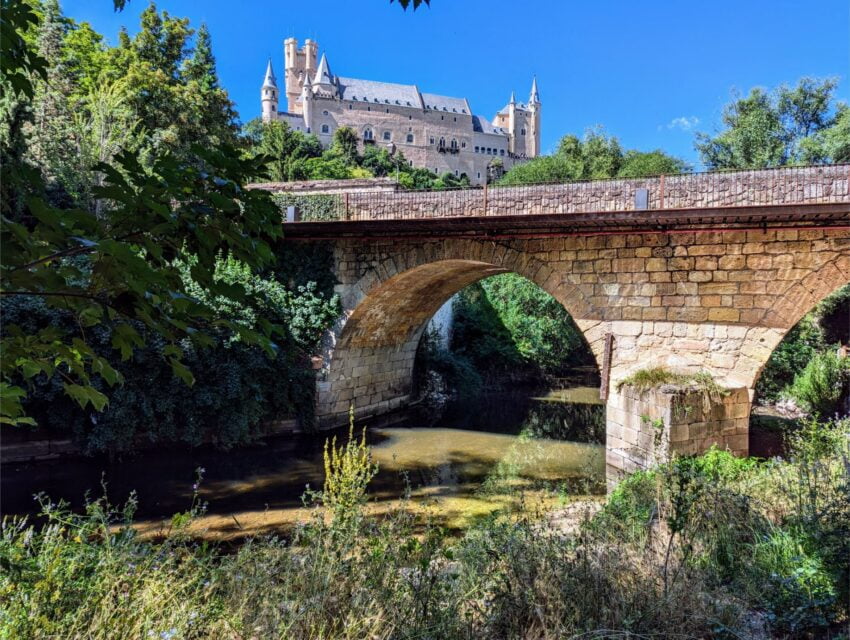
Making A Day Trip To Segovia (Spain)
One of the great things about living in Madrid is that there are so many day trip possibilities to choose from. And a great thing about staying here for a month is that we will have time to visit all of these places eventually.
That said, our Galicia Workaway hosts Lisa and Stewart were insistent that we prioritize a trip to the medieval town of Segovia, which they couldn’t say enough great things about.
So when it came to planning our first proper day trip out of Madrid, Segovia was the obvious choice.
And wow did it deliver.
Come take a look at what we did and how we did it.
Perhaps it will convince you to visit Segovia for yourselves!
Why Visit Segovia, Spain?
The reasons are many.
Segovia, a city in the autonomous community of Castile and León, Spain, boasts a rich and diverse history spanning over 2,000 years. From Roman aqueducts to medieval castles, and from Gothic cathedrals to Renaissance palaces, Segovia’s historical landmarks are a testament to its significance as a cultural and architectural treasure.
The city’s most iconic feature, the Aqueduct of Segovia, was built during the Roman Empire’s reign, likely in the late 1st or early 2nd century AD. This engineering marvel supplied water to the city from the Frío River and remains one of the most intact Roman aqueducts in Europe.
Segovia was an important center of power during the Middle Ages, with the Alcázar de Segovia fortress-palace serving as a royal residence and military stronghold. The city’s cathedral, begun in the 16th century and completed in 1768, is a stunning example of Gothic architecture. And despite the wars that ravaged Spain during post-medieval times, the city’s medieval quarter was largely preserved. Its historic center was declared a UNESCO World Heritage Site in 1985.
So this, along with encouragement from our friends Lisa and Stewart, made visiting Segovia a no-brainer.
How Did We Get To Segovia?
There are a variety of ways to get there, but train and bus are the most affordable options.
We chose to take the high-speed train from Estación de Madrid-Chamartín-Clara Campoamor to Segovia Guiomar station, leaving early on a Wednesday morning.
Round trip tickets were €22.20 ($24.06 USD) each. We could have taken a slow train for half the cost, but a 27-minute ride seemed to be a much better use of our limited time compared to a 90-minute ride.
Once we arrived at Segovia Guiomar station, we still needed to get to the historic downtown area which was a 20-minute bus ride away.
Thankfully, Segovia Guiomar station is well-serviced by the public bus system, and they cater to the needs of arriving tourists.
We just looked for BUS #11 (Acueducto) waiting outside the station, paid the €2.25 ($2.43 USD) fare (per person), and were dropped off right next to the Roman aqueduct in the historic center where everything is accessible on foot.
Here is the exact location of where BUS #11 (Acueducto) dropped us off.
To return to the train station later in the day, we just got on BUS #11 (Estacion Ave) in that same location.
Here is a photo of all of the departure times back to the train station.
Once we reached the Aqueduct at 9 am, we immediately walked to Alcázar de Segovia since we had prepurchased tickets for a 10 am timeslot entry.
Alcázar de Segovia
For most who come to Segovia, the main draw is the Alcázar (= royal palace).
The Alcázar was built in the 12th century as a small Moorish fortress, and over the centuries, it was expanded and modified by various monarchs, including Alfonso VIII, Juan II, and Ferdinand II. The palace served as a royal residence, a military stronghold, and a symbol of power and authority.
The Alcázar’s architecture reflects its complex history, blending Moorish, Gothic, and Renaissance styles. The fortress stands on a rocky crag overlooking the confluence of the Eresma and Clamores rivers, with impenetrable walls, a deep moat, and impressive towers. The palace’s interior features lavishly decorated rooms, coffered ceilings, and ornate stone carvings.
The Alcázar has played a significant role in Spanish history, hosting important events such as the Cortes of Castile, the signing of the Concord of Segovia, and the coronation of Queen Isabel I. It has also been used as a military academy, a state prison, and a museum.
The Alcázar’s architecture and design have inspired two iconic Disney castles: the Wicked Queen’s castle in Snow White and the Seven Dwarfs (1937) and Cinderella Castle in Walt Disney World and Tokyo Disneyland.
We prepurchased 10 am tickets online to the Alcázar, which is highly recommended so you have at least a 30-minute block with minimal crowds. And as an extra we paid for tower access, since the views are said to be spectacular.
We were lucky and were able to score a €1 web discount, so each ticket cost €9 ($9.76 USD).
What an impressive place! The rooms, views, and military museum were something to behold.
Here are some photos from our visit.
Alcázar de Segovia Scenic Hike
Once we finished our tour of Alcázar de Segovia, we immediately did a short hike on the trails around the premises to take in some great views of the castle exterior.
Our hike was just under 1.5 miles. Aside from the stairways at the beginning and end of our route, the hike was pretty easy following shaded, well-maintained walking paths. If you download the maps.me app to your smartphone and download the map for Segovia, you can easily follow the same route we took.
To begin our hike, we took an immediate left after we exited the palace gate. We then followed the walled cliff edge until we reached a steep stairway leading downward.
At the bottom, we followed sidewalks, then public walking paths, for the rest of the route.
The views of the castle were fantastic!
Catedral de Segovia
Our second destination in Segovia was Catedral de Segovia, which was great since that was pretty much where we ended up at the end of our hike!
Like the Alcázar, the cathedral is a major draw for tourists to the city.
Built in the 16th century, Catedral de Segovia is considered one of the most beautiful and impressive cathedrals in Spain.
The cathedral features a unique blend of Gothic and Renaissance styles, with intricate stone carvings, stunning stained-glass windows, and ornate chapels. The cathedral also houses an art museum, displaying several significant works of art important to the Catholic church.
Tickets for the cathedral were unusual, as they included entry to nearby Palacio Episcopal. So for €4 ($4.33 USD) per person, you get entry to two locations.
Sweet.
We were impressed with the cathedral and thought it was both very interesting and of good value.
Check out some photos from our visit.
Palacio Episcopal de Segovia
Once we wrapped up our time at the cathedral, we were off to Palacio Episcopal, which was only a few blocks away.
Palacio Episcopal de Segovia is a historic building that served as the residence of the bishops until the late 20th century. Constructed in 1755 on the remains of the Palacio de los Salcedo, it retains the Renaissance-style façade and portico of the original building.
The palace features two main areas: exhibition rooms showcasing liturgical objects, sculpture, painting, textiles, and other art pieces; and the noble rooms, which were used for representation and living quarters for the bishops until recent times.
We hadn’t intended on visiting Palacio Episcopal, but since admission was included with that of the cathedral, why not?
And much to my surprise, the displays were really interesting. In particular, we enjoyed all of the priceless crafted artifacts that were used during masses by the church.
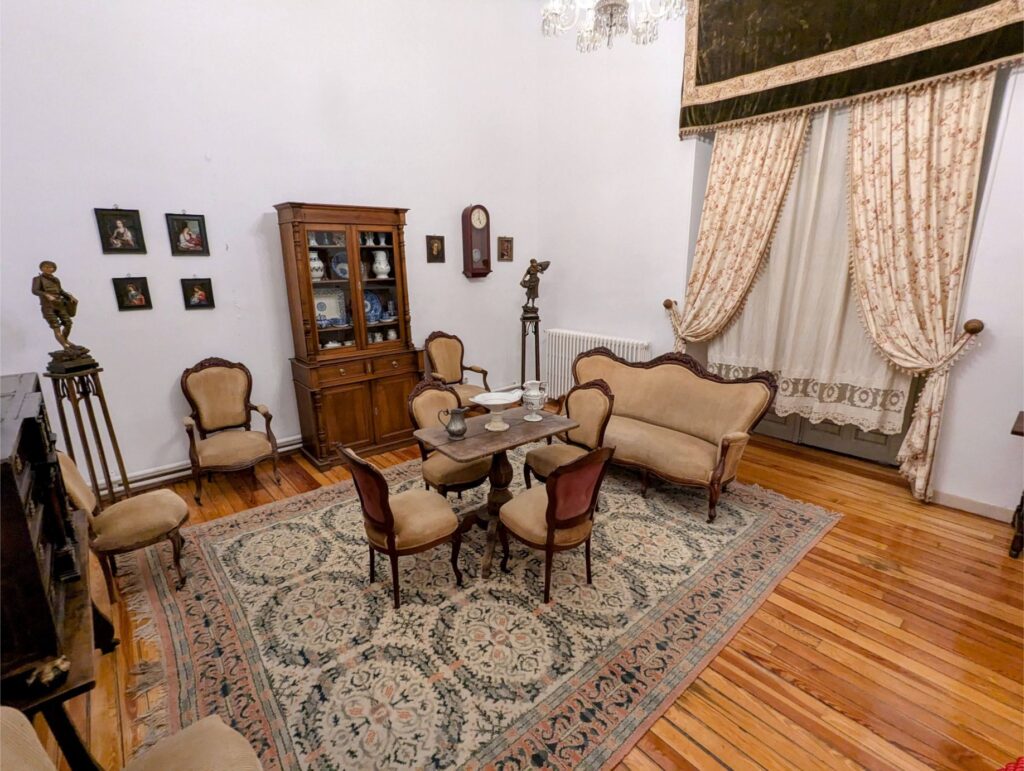
It was around 1:30 pm by the time we were done looking around, so we grabbed a menu del dia at a local restaurant, slightly off the main tourist throughway to avoid the craziest prices. At €15 ($16.40 USD) each, we thought we did pretty well considering it was impossible to escape the tourist zone.
The Aqueduct of Segovia
It was just after 3:30 pm at this point, so we decided to finish off our visit by exploring the town, and then walking the length of the impressive Roman Aqueduct that Segovia is famous for.
Built by Romans around the 1st century AD, the Aqueduct of Segovia is a remarkable feat of engineering, carrying water from the Frio River, 18 kilometers away, to the city. The aqueduct features 167 tall arches, made entirely of granite blocks without mortar, spanning a total length of 800 meters.
Although no longer in operation, it was used to distribute water until 1973!
And the views of this structure were impressive. Take a look at some of our photos.
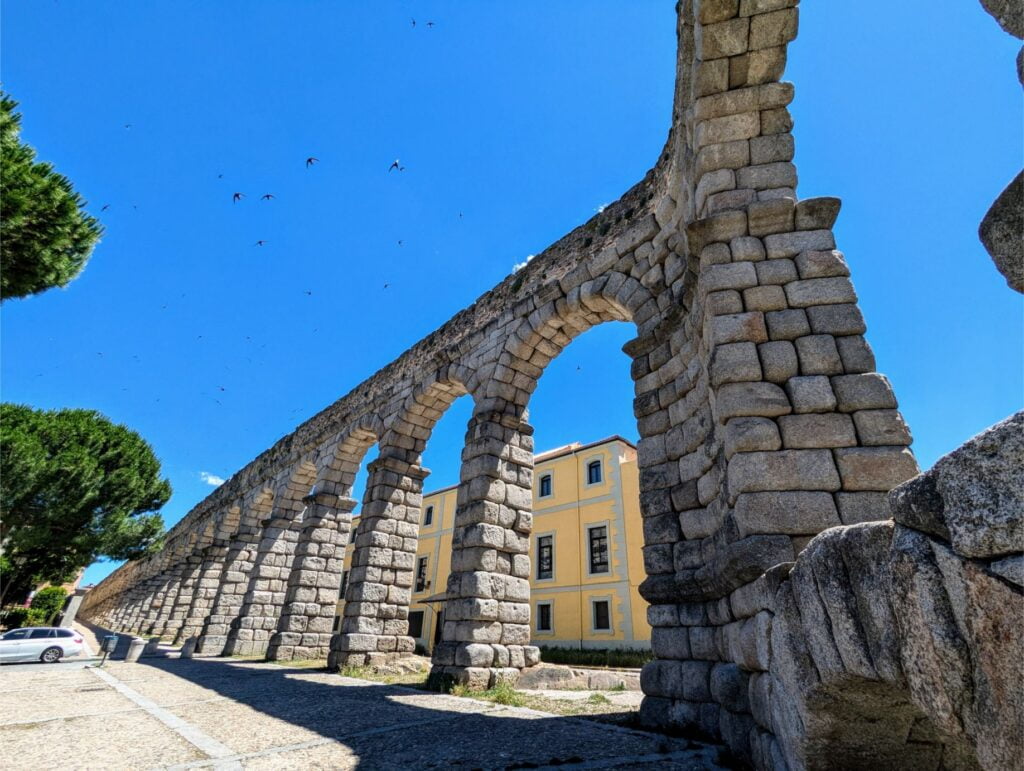
Even after taking several physics classes during our lives, it was hard for us to believe that no mortar was used to hold the aqueduct stones together. They are 100% held together by gravity.
By the time we finished exploring and grabbed an iced coffee to beat the heat, we just had enough time to take the #11 BUS (Estacion Ave) back to Segovia Guiomar station, and then catch our 6:30 pm train back to Madrid.
Closing Thoughts About Our Day Trip to Segovia
We were really beat towards the end of the day, but we had a wonderful time!
Segovia completely delivered as promised, and we would recommend it to anyone thinking about making a visit.
Our thanks to our friends Lisa and Stewart for making the suggestion!
Hopefully, our experiences in making the trip happen will make it easier for others to do so too.
Until next time…
Thanks for reading!
If our posts have saved you time, money, or are enjoyable in some other way, BUY US A COFFEE! It helps cover the costs of our blog, keeps our blog ad-free, and motivates us to continue posting about our experiences.
And leave a comment below and subscribe to get email notifications whenever we post!
Follow Two Travel Turtles on Facebook and X.
